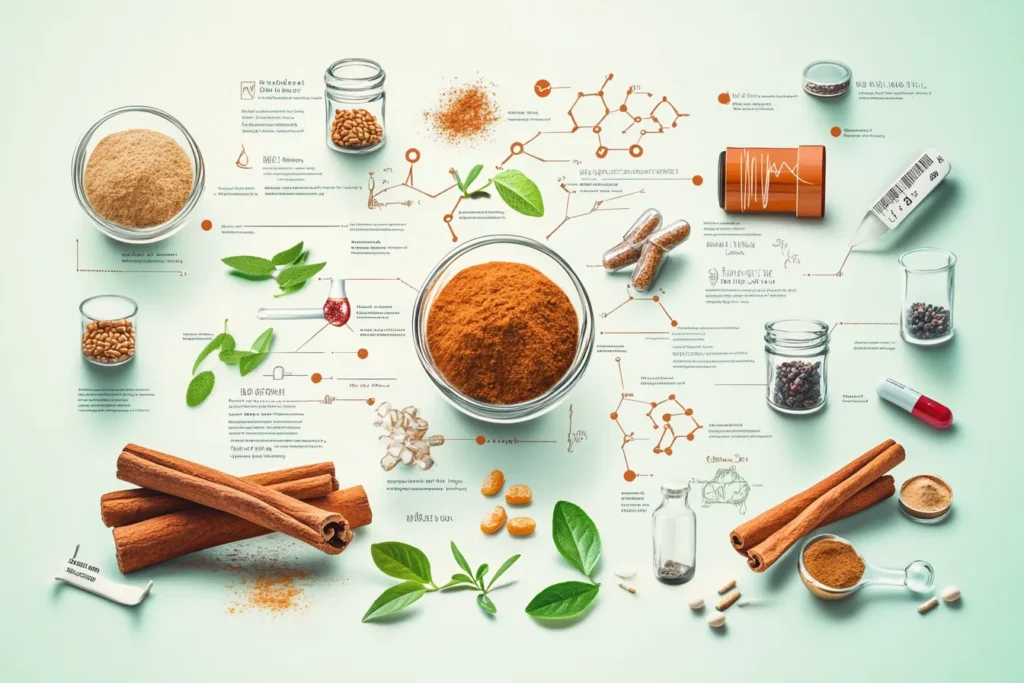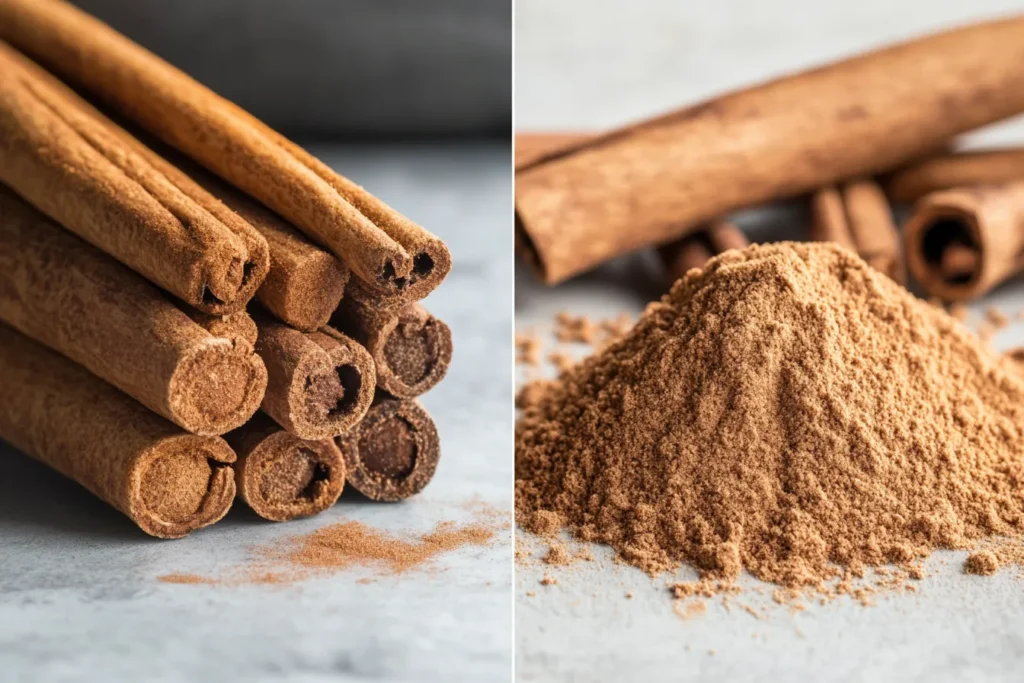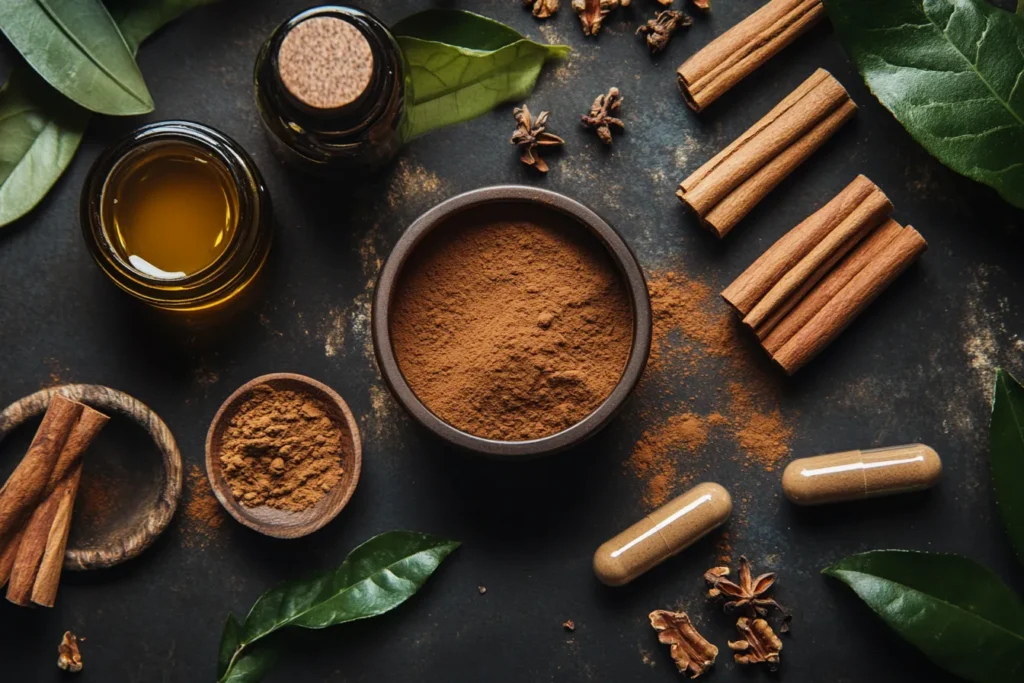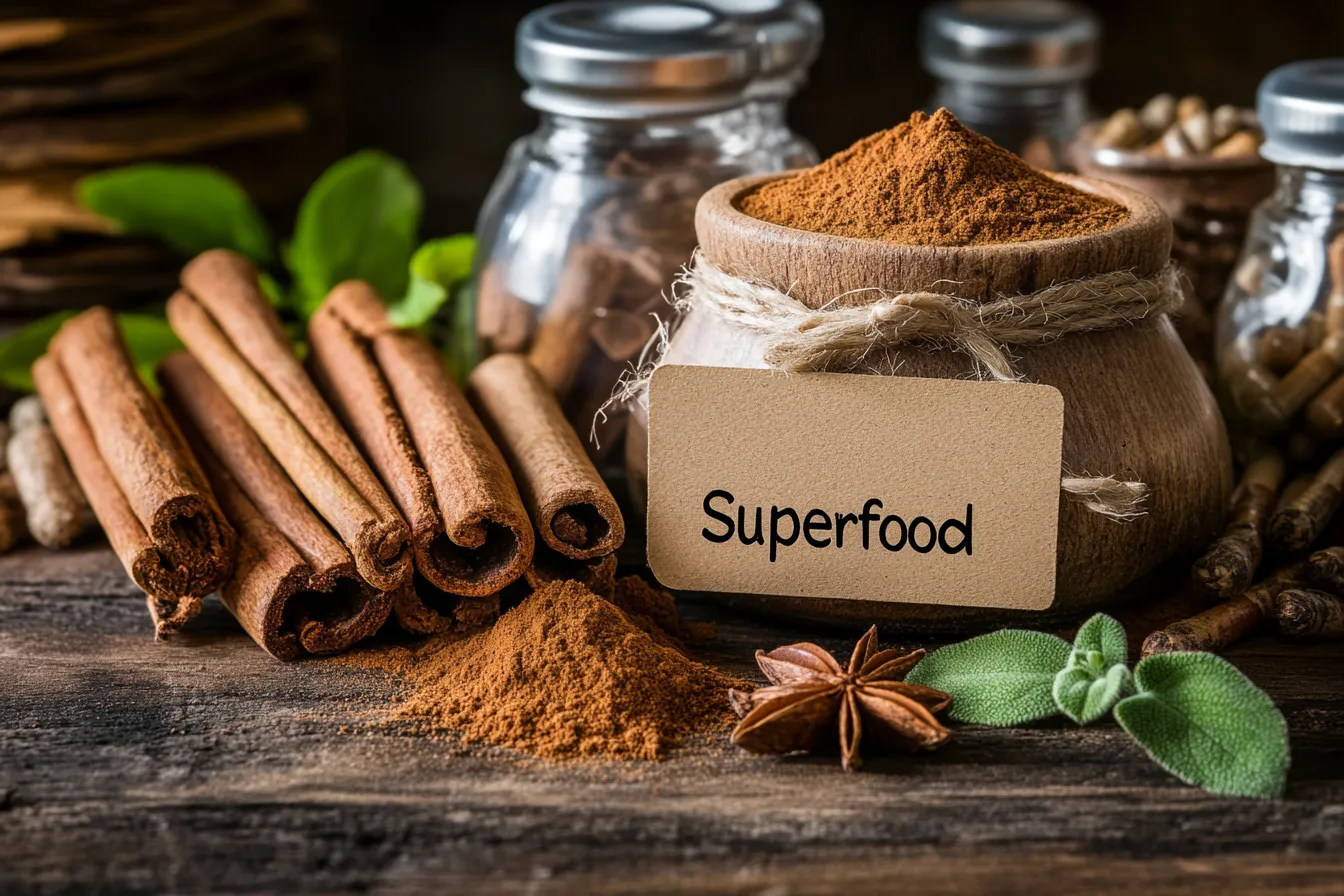Introduction
Cinnamon, derived from the bark of Cinnamomum trees, has been treasured for millennia for its flavor and aromatic qualities. But when did cinnamon become popular as a superfood a health powerhouse rather than just a spice? In this blog, we trace cinnamon’s journey from ancient trade routes to modern wellness trends, highlight scientific studies backing its health claims, and unpack why it’s now trending globally. Armed with expert insight and curated external resources, this post is designed to compete with top-ranking content on Google for the keyword “when did cinnamon become popular as a superfood” while remaining rich, readable, and human‑why.
History of Cinnamon Use: Ancient Roots to Now
Cinnamon in Antiquity and Medieval Times
Cinnamon’s history spans thousands of years. The earliest recorded use dates back to ancient Egypt, where it was imported from Asia and used in embalming processes and religious rituals. The Egyptians valued it as much as gold. It also played a significant role in Ancient Chinese medicine and Ayurvedic healing systems in India, being prescribed for everything from digestion issues to respiratory infections.
In the Bible, cinnamon is mentioned several times, indicating its high value in Jewish and Christian traditions. By 500 BCE, Arab traders had established a monopoly over the cinnamon trade, shrouding its origin in mystery to maintain high prices. Ancient Greeks and Romans regarded it as a status symbol. Roman emperors would offer cinnamon in public offerings or funerals as a sign of respect and wealth.
Cinnamon in Early Modern Period: Trade and Spices
During the 16th and 17th centuries, cinnamon became central to the European spice trade. The Portuguese were the first Europeans to dominate cinnamon trade routes by colonizing Ceylon (present-day Sri Lanka), the native home of true cinnamon or Ceylon cinnamon. Later, the Dutch and British fought bitterly for control over Ceylon, further inflating cinnamon’s global economic value.
This period also marked cinnamon’s integration into everyday life in Europe not just for royalty, but slowly making its way into the kitchens of the upper class. It was mainly used in desserts, stews, and mulled wines.
Still, at this point, cinnamon was known as a flavorful luxury not a superfood. That label wouldn’t come for hundreds of years..Matcha Is Booming
Emergence of the “Superfood” Label
Rise of Nutrition Science in the 20th Century
The modern concept of “superfoods” began to take shape in the late 20th century as nutritional science evolved. With growing interest in antioxidants, polyphenols, and micronutrients, foods once known for culinary value were re-evaluated through the lens of health and wellness. Scientific journals and health magazines began highlighting functional foods that could potentially prevent chronic diseases.
Cinnamon entered this space as researchers started publishing studies in the 1980s and 1990s that suggested it might regulate blood sugar levels and offer anti-inflammatory benefits. These findings aligned with the growing movement toward natural health and plant-based remedies.
By the early 2000s, the term superfood had become a marketing powerhouse, and cinnamon began to appear on superfood lists alongside turmeric, blueberries, and kale.
Cinnamon Research: Antioxidants & Blood Sugar
What really propelled cinnamon into superfood territory were the findings around its polyphenol content and its possible role in managing Type 2 diabetes. One pivotal study published in 2003 in the journal Diabetes Care found that consuming just 1 to 6 grams of cinnamon daily helped reduce blood glucose levels in people with Type 2 diabetes.
Cinnamon contains powerful antioxidants such as cinnamaldehyde, eugenol, and coumarin, which have been shown to reduce oxidative stress and inflammation. These compounds sparked a wave of further research, with studies suggesting that cinnamon could also lower LDL cholesterol and triglycerides, increase insulin sensitivity, and even provide neuroprotective effects..Iced Chai Latte
These benefits, coupled with centuries of traditional use, built the case for cinnamon being more than a spice—it was now a legitimate superfood in the eyes of health-conscious consumers.

Popularity Surge in 21st Century
Social Media Trends & Celebrity Endorsements
The 21st century ushered in a new era of health and wellness culture. With platforms like Instagram, TikTok, and YouTube taking over consumer attention, trends could spread globally in a matter of days and cinnamon was quick to benefit. Fitness influencers, holistic nutritionists, and celebrities began touting cinnamon as a staple in their morning routines, smoothies, and detox drinks.
Gwyneth Paltrow’s Goop brand, among others, has frequently praised cinnamon’s health benefits, integrating it into wellness recipes. Instagram influencers started promoting cinnamon lattes and “cinnamon water detox,” driving curiosity and experimentation among followers.
Pinterest also became a hotbed of cinnamon-related content, with searches like “cinnamon weight loss tea,” “DIY cinnamon fat burners,” and “cinnamon for glowing skin” soaring in popularity between 2015 and 2021.
These platforms didn’t just promote cinnamon as a health food; they glorified it as a superfood, helping the term stick in everyday language and influencing Google search trends to spike worldwide.
Cinnamon in Health Food Movements
Cinnamon’s role in health food movements cannot be overstated. As more people turned to gluten-free, keto, and paleo diets, cinnamon found its way into countless recipes and nutrition plans. Why? Because it’s low in calories, has no sugar, and offers a burst of flavor without additives making it a perfect fit for clean eating.
Functional beverages like golden milk, herbal teas, and gut-friendly smoothies often include cinnamon not just for taste, but for its perceived digestive and metabolic benefits. It’s also a regular feature in plant-based baking and superfood bowls.
Major health food brands began launching cinnamon-enhanced products, including protein bars, meal shakes, and herbal supplements. The inclusion of cinnamon as a key ingredient in “super blends” further cemented its new identity.
Whole Foods Market, in their annual trend reports, highlighted cinnamon as a “resurgent health spice” in 2018 and 2019, reinforcing its market presence and driving consumer interest.
Retail analytics firm SPINS noted a significant rise in the sale of cinnamon-infused health products from 2020 to 2023, especially during the COVID-19 pandemic, as consumers sought natural immunity boosters.

Science-Based Health Benefits
Antioxidant and Anti‑Inflammatory Effects
Cinnamon is loaded with potent antioxidants that help fight oxidative stress one of the main causes of aging and chronic disease. In particular, cinnamon ranks highly on the ORAC (Oxygen Radical Absorbance Capacity) scale, which measures antioxidant content in foods.
The most prominent active compound, cinnamaldehyde, gives cinnamon its smell and many of its health benefits. It has been shown to reduce markers of inflammation and may help combat conditions like arthritis, according to a 2017 meta-analysis published in Phytotherapy Research.
Additionally, cinnamon’s antioxidant content helps neutralize free radicals, which can otherwise damage cells and DNA.
Blood Sugar Control & Metabolic Support
Perhaps the most well-researched health benefit of cinnamon is its effect on blood sugar levels. As previously mentioned, the 2003 Diabetes Care study opened the door to cinnamon being viewed not just as food, but as a metabolic regulator.
Further studies supported those findings. Cinnamon may reduce insulin resistance by mimicking insulin’s activity at the cellular level, allowing glucose to enter cells more efficiently. It slows the breakdown of carbohydrates in the digestive tract, which can prevent blood sugar spikes after meals.
Due to these benefits, cinnamon is often included in diabetic-friendly diets and supplements formulated for metabolic health.
Heart Health, Immunity, Brain Function
Emerging research also points to cinnamon’s role in improving cardiovascular health. It has been found to lower LDL (bad) cholesterol while increasing HDL (good) cholesterol. It also exhibits anticoagulant effects that may reduce the risk of blood clots.
From an immune standpoint, cinnamon has antibacterial and antiviral properties. Studies suggest it may combat common pathogens like E. coli and Listeria. That’s why it’s often used in Ayurvedic and traditional Chinese medicine to treat colds and infections.
Some animal studies even hint at cinnamon’s neuroprotective effects. Researchers are investigating its potential role in reducing the progression of Alzheimer’s and Parkinson’s diseases due to its anti-inflammatory and antioxidant properties in brain tissues.
Culinary & Commercial Uses Fueling Popularity
Foods, Beverages, Supplements
Cinnamon’s widespread culinary applications have played a major role in its evolution from simple spice to celebrated superfood. Whether it’s sprinkled on oatmeal, stirred into coffee, or infused into smoothies, cinnamon’s versatility makes it easy for consumers to incorporate it into their daily routines. This accessibility has been a powerful driver of its popularity.
In the beverage sector, cinnamon has become a staple. It’s commonly added to golden milk, chai lattes, detox teas, and even energy drinks. Kombucha brands frequently use cinnamon in limited-edition “immunity blends,” and wellness cafes offer cinnamon-enhanced shots and elixirs.
In food products, you’ll find cinnamon in everything from protein bars and paleo pancakes to breakfast cereals and yogurt. Brands capitalize on its natural sweetness and spice to deliver flavor without added sugars, aligning perfectly with the clean-label movement. Cinnamon adds warmth to baked goods and also serves as a natural preservative due to its antimicrobial properties.
The supplement industry has gone a step further. You can now find cinnamon capsules, tinctures, and powders marketed for everything from blood sugar balance to weight management and immune support. Many of these products feature Ceylon cinnamon marketed as “true cinnamon” because of its lower coumarin content, which is considered safer for long-term use.
Major wellness brands like Nature’s Bounty and Gaia Herbs include cinnamon as a primary ingredient in their blood sugar management products. Supplement market analysts report steady growth in cinnamon-based products, especially in North America and Asia-Pacific regions.
Cinnamon in Global Cuisines Adds Cultural Depth
Beyond Western wellness trends, cinnamon’s presence in global cuisines adds cultural significance that enhances its staying power. In Indian cuisine, it’s a foundational element of spice blends like garam masala and biryani. In Middle Eastern dishes, it flavors both sweet and savory recipes think tagines and spiced rice.
In Mexican food culture, cinnamon (often paired with chocolate) features heavily in traditional drinks like champurrado and café de olla. And in the U.S., cinnamon evokes nostalgia and comfort, commonly found in apple pie, snickerdoodles, and cinnamon rolls.
This broad culinary appeal makes cinnamon a familiar favorite across age groups and cultural backgrounds. It bridges the gap between heritage and health, which few superfoods manage to do.
Cinnamon-Infused Skincare and Wellness Products
Cinnamon’s rise as a superfood isn’t limited to the kitchen. The beauty and wellness industry has also embraced its benefits. Due to its antibacterial and anti-inflammatory properties, cinnamon is used in face masks, lip plumpers, and scalp treatments.
Brands like LUSH and The Body Shop have launched cinnamon-infused products as part of their natural skincare lines. Cinnamon oil is said to promote blood flow and deliver a warming sensation, making it popular in body scrubs and massage blends.
Its aroma also supports its use in aromatherapy. Some essential oil blends containing cinnamon are marketed as mood boosters and stress-relievers.
These non-edible applications reinforce the superfood image by expanding cinnamon’s role in holistic wellness mind, body, and spirit.

Risks and Safety Considerations
Cassia vs Ceylon: Coumarin Concerns
As cinnamon rose to superfood status, health experts began pointing out that not all cinnamon is created equal. The two primary types of cinnamon consumed today are Cassia cinnamon (Cinnamomum cassia or Cinnamomum aromaticum) and Ceylon cinnamon (Cinnamomum verum).
Cassia cinnamon, the more common and inexpensive variety, is widely used in North America and Asia. However, it contains high levels of coumarin, a natural compound that, in large doses, has been linked to liver damage and toxicity in sensitive individuals.
Ceylon cinnamon, also known as “true cinnamon,” has significantly lower coumarin levels, making it safer for long-term or high-volume consumption. As awareness grew about coumarin risks, health-focused consumers and brands began opting for Ceylon cinnamon, especially in supplements and wellness recipes.
In 2006, the European Food Safety Authority (EFSA) established a Tolerable Daily Intake (TDI) for coumarin of 0.1 mg per kg of body weight. This raised awareness about the potential dangers of excessive Cassia cinnamon intake and further pushed the market toward safer alternatives like Ceylon.
If you’re consuming cinnamon daily for health reasons especially in supplement form experts recommend choosing certified Ceylon cinnamon. It’s typically labeled as such and often priced higher than generic Cassia options.
Recommended Intake & Interactions
Moderation is key with any superfood, and cinnamon is no exception. While studies have shown benefits from doses ranging between 1–6 grams per day (roughly ½ to 2 teaspoons), exceeding this regularly especially with Cassia cinnamon can pose health risks.
Possible side effects of high cinnamon consumption include:
- Liver toxicity (mainly from high coumarin intake)
- Mouth sores or irritation (due to cinnamon oil)
- Blood thinning effects, which may interact with anticoagulant medications
Cinnamon may also affect blood sugar levels, so people on diabetes medications should be cautious about combining the two without consulting a healthcare provider.
Pregnant or breastfeeding women are advised to consult with their doctors before taking cinnamon supplements, as high doses may not be safe during pregnancy.
Reading Labels and Choosing Wisely
As cinnamon’s superfood status continues to grow, many commercial products now emphasize “Ceylon” on their labels. However, some still do not specify the type. If it doesn’t say “Ceylon,” it’s usually Cassia by default.
Look for organic, non-GMO, and lab-tested labels when buying cinnamon supplements. Reputable companies also disclose coumarin levels or confirm minimal content through third-party testing.
When buying ground cinnamon for cooking or teas, choose brands that clearly identify the source and botanical name. Reputable options include Frontier Co-op (Ceylon cinnamon), Simply Organic, and other brands available through natural food retailers.
FAQs
When did cinnamon start being called a superfood?
Cinnamon began earning the “superfood” label in the early 2000s, coinciding with growing public interest in plant-based health and natural wellness. The label became mainstream after research showed cinnamon could help regulate blood sugar, reduce inflammation, and provide antioxidant benefits. As media outlets and health brands began spotlighting these findings, the superfood designation quickly caught on.
What caused cinnamon’s popularity spike?
The spike in popularity can be attributed to a combination of scientific research, wellness influencers, social media trends, and product innovation. Cinnamon’s integration into clean eating, keto, and anti-inflammatory diets also fueled interest. Its versatile taste and affordability made it an easy addition to both home kitchens and commercial health products.
Are all cinnamons equally healthy?
No. While all cinnamon types offer some benefits, Ceylon cinnamon is considered safer for regular consumption due to its low coumarin content. Cassia cinnamon, the more common variety, contains higher coumarin levels, which can be harmful in large doses. Always check the label to know what type you’re consuming, especially if you’re using it daily or in supplement form.
How much cinnamon is safe daily?
For most adults, consuming 1–2 teaspoons (about 2–4 grams) of cinnamon per day is considered safe. However, long-term use of Cassia cinnamon should be limited due to its coumarin content. Those taking cinnamon supplements or on medication should consult a healthcare provider.
Can cinnamon help lower blood sugar?
Yes. Multiple studies suggest that cinnamon can improve insulin sensitivity and lower fasting blood glucose levels in people with type 2 diabetes. The effect is more pronounced when used consistently and in conjunction with a healthy diet. However, cinnamon should not be a substitute for medical treatment.
Where to buy high-quality cinnamon?
You can find high-quality Ceylon cinnamon online or in health food stores. Look for reputable brands like Frontier Co-op, Simply Organic, or Naturevibe Botanicals. Make sure the label says “Ceylon” or “true cinnamon” and ideally, choose certified organic and lab-tested varieties.

Conclusion
Cinnamon’s journey from ancient medicine to modern superfood is a testament to its rich cultural heritage and compelling health benefits. What started as a luxury item in ancient trade routes has now become a global wellness staple, praised for its antioxidant power, blood sugar regulation, and culinary versatility.
Its rise to superfood fame is supported by both science and trend, making it a unique player in the health food world. From smoothies to skincare, cinnamon proves that tradition and innovation can go hand in hand.
Whether you’re adding it to your morning coffee, trying it in a supplement, or sprinkling it on a warm bowl of oats, cinnamon offers much more than flavor it offers wellness backed by centuries of use and modern research. Just remember to choose your type wisely and consume it in moderation.
Cinnamon and Health — WebMD
https://www.webmd.com/diet/health-benefits-cinnamon
Anchor text: “health benefits of cinnamon”
Cinnamon: Evidence-Based Review — Healthline
https://www.healthline.com/nutrition/10-proven-benefits-of-cinnamon
Anchor text: “proven benefits of cinnamon”
Ceylon vs. Cassia Cinnamon — Cleveland Clinic
https://health.clevelandclinic.org/cinnamon-good-for-you
Anchor text: “Cassia vs Ceylon cinnamon”

Name: When Did Cinnamon Become Popular as a Superfood
Ingredients
Equipment
Method
- Instructions:
- Begin with Ancient Origins – Discover cinnamon’s revered role in ancient Egypt, China, and Rome.
- Add Trade Influence – Blend in how colonial powers like the Portuguese and British made cinnamon a global commodity.
- Stir in Nutrition Science – Fold in studies from the 1980s and 2000s showing cinnamon’s effect on blood sugar and inflammation.
- Mix Social Trends & Media – Whisk in Instagram, Pinterest, and influencer culture starting in the 2010s.
- Simmer with Superfood Status – Let the term “superfood” develop through marketing, holistic wellness, and commercial supplements.
- Season with Safety Tips – Balance the mix with a distinction between Ceylon and Cassia and recommended daily limits.
- Serve hot with insight – Enjoy the full-bodied narrative of how cinnamon earned its rightful place as a superfood.
